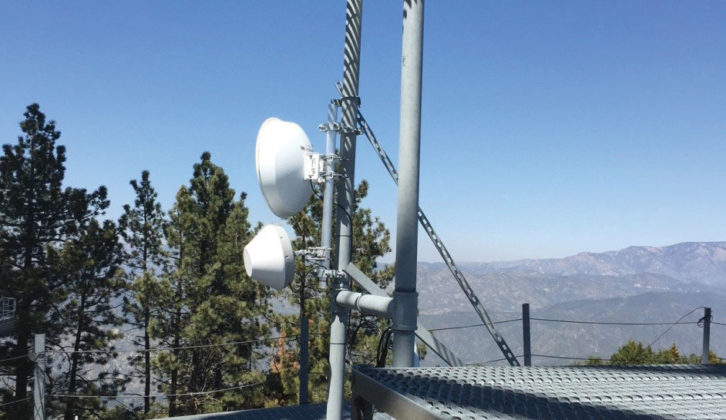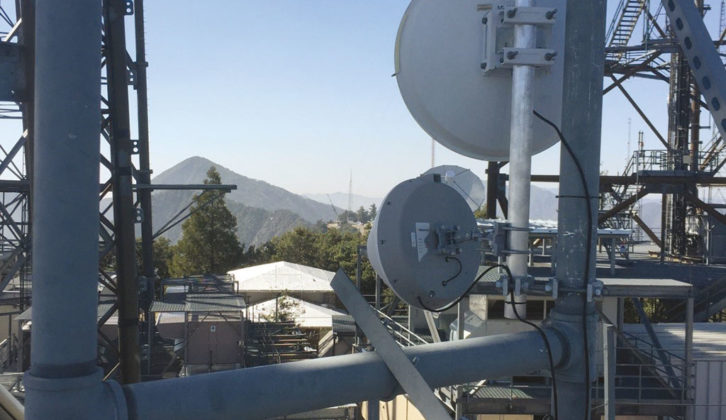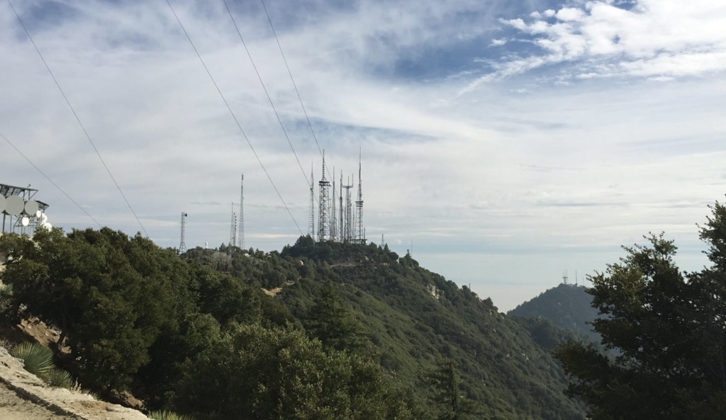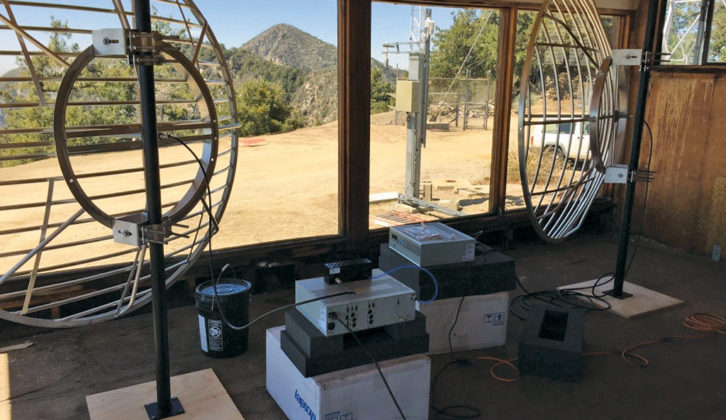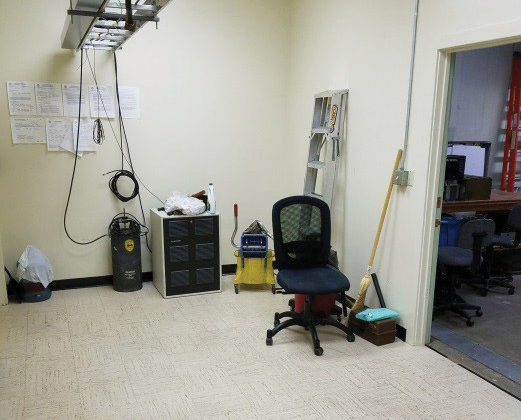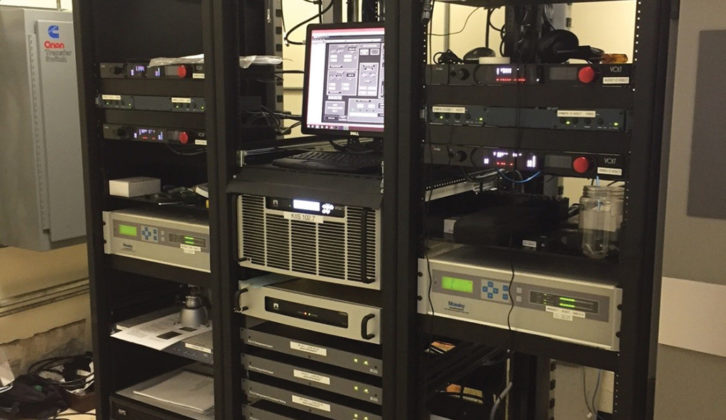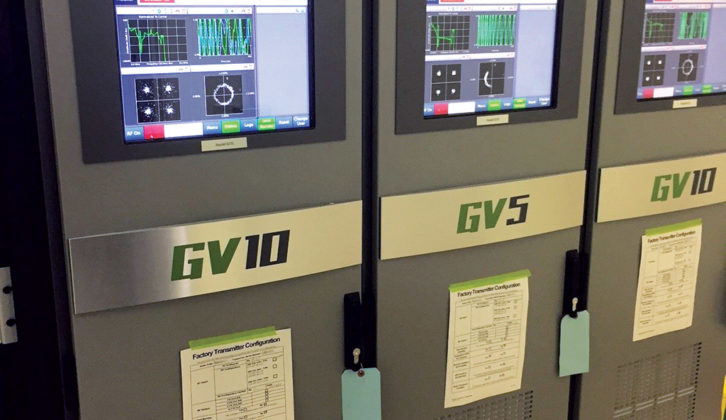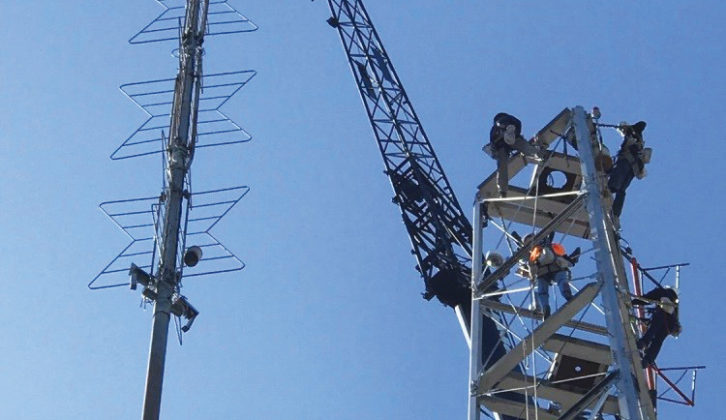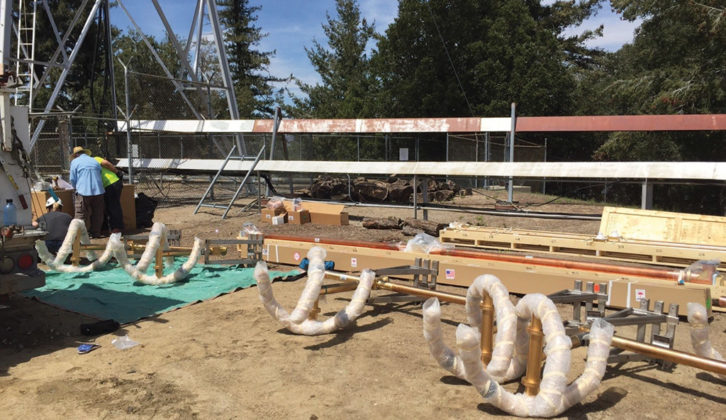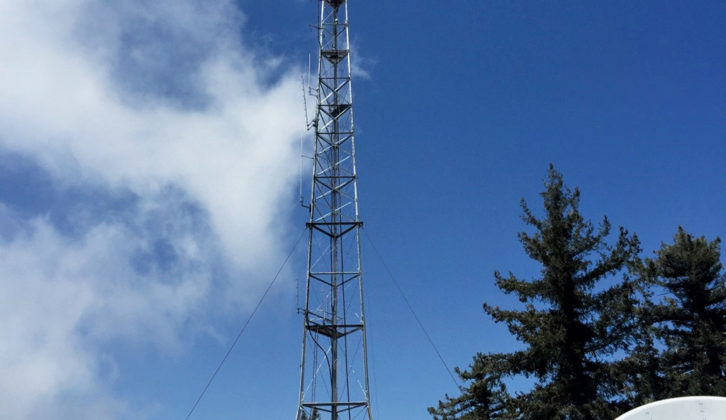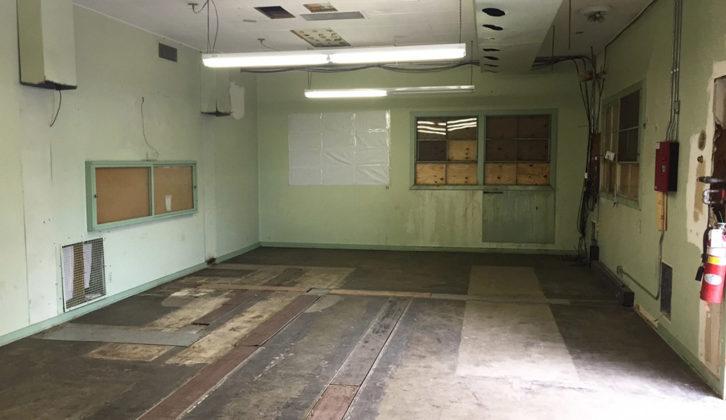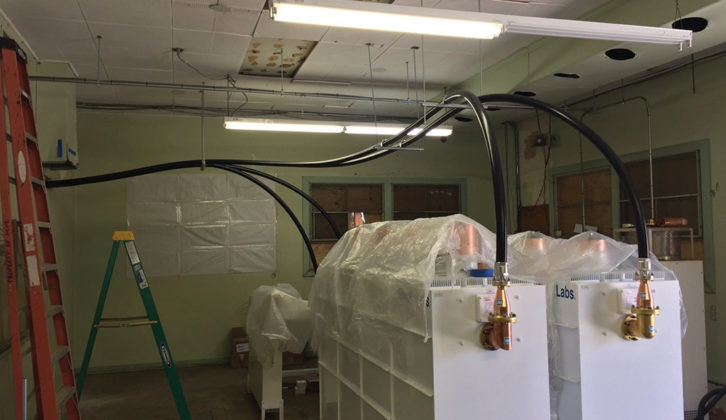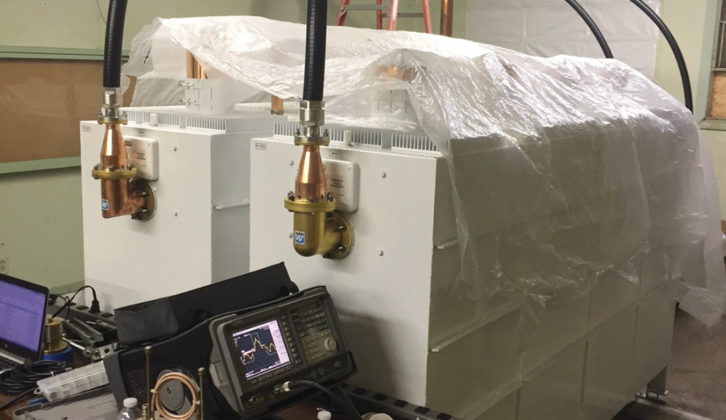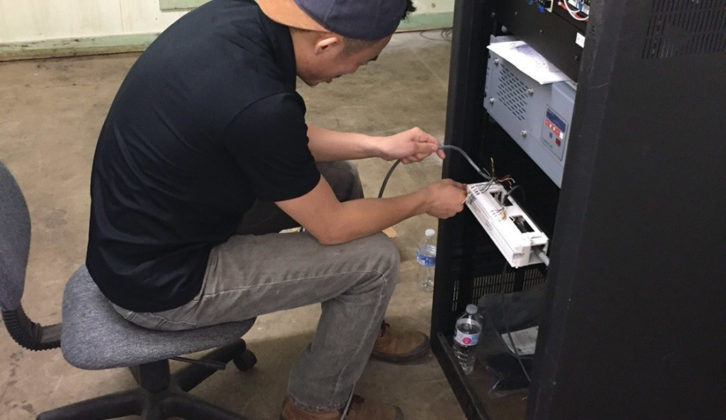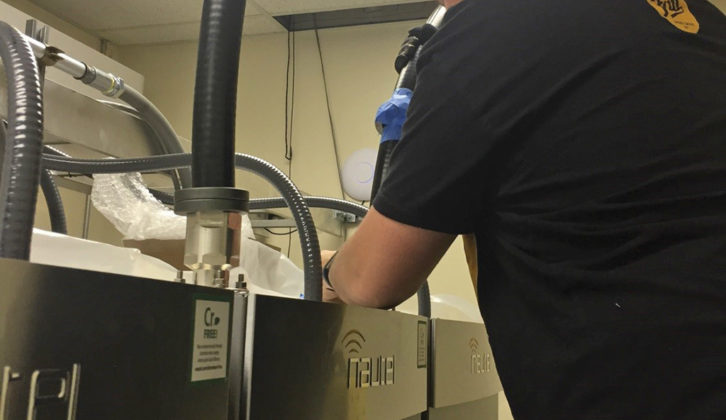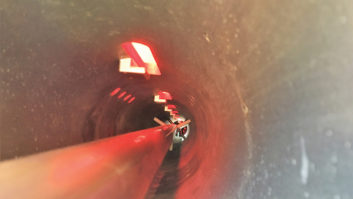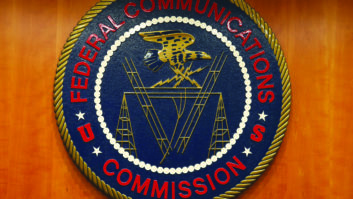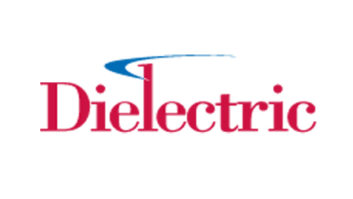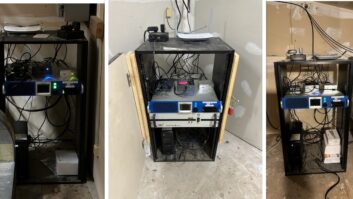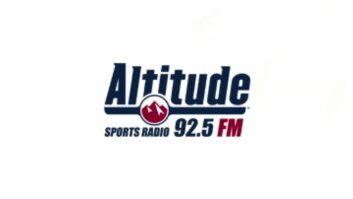The incentive auction was bound to have consequences for the FM stations on Los Angeles’ Mt. Wilson, where TV and radio share tower space, often in close quarters. It became clear that this would be especially true in the vicinity of the “Post Office” site, where iHeartMedia has three of its four FMs with a fourth next door. Historically, collocated users coped with the work in the neighborhood by participating in group power reductions, but the changes now anticipated would probably require days upon days of work.
In this series, Doug Irwin has discussed the means by which iHeartMedia decided to operate its four Mt. Wilson FMs while the TV antenna changes are being made.
Because Video Road plays such an important role in the Deer Park system, it was necessary to get the communications link between the two sites going as soon as possible. The link between the Poole Building and the Post Office had to be made to work as well.
We hired a local contractor to build an antenna mount up on the top of the ice shield on the Post Office. Fortunately, we did have a clear view of Deer Park, but really only from this spot.
What I refer to as the “sun room” holds our 950 MHz antennas, which look directly back at our studio facility in Burbank, along with the 5.8 GHz dish that looks back at Video Road.
We got this set of antennas and radios up and running early on, since it provides the “backup” communications with Burbank. If Video Road is completely dead for some horrible reason, we can use our 950 MHz links, plus backup audio processors, to generate the composite.
One of the ideas that our own Matt Anderson brought up from San Diego was the idea of feeding two exgine cards by setting their IP addresses to the broadcast address of the particular network they live on, then telling the exporter to send E2X packets to that address. He had done this in San Diego, but the difference here was that the two exgine cards were at separate sites.
How would this complication affect the performance? We started early on working on that. Our new site was going to have HD, and naturally we wanted the time delay to match.
The radio link between sites carries a trunk that has eight VLANs — four of which are small ones associated with HD — specifically for the E2X packets. This idea ended up working pretty well except that we really didn’t have any way to manipulate the varying amount of time it would take for packets to transit the system. On the other hand, our IP MPXp units could be manipulated using the configurable buffer depth.
Quite a bit of time was spent trying to match these up so that the HD timing was right on. Unfortunately, that part didn’t really work. We ended up adding Inovonics Justin 808 units at Video Road for all four stations. By their placement, we got them to correct the HD delay on normal transmitters, as well as the new rigs at Deer Park. (That was another consequence of the “slave” nature of Deer Park vis-à-vis Video Road.)
As this work was going on indoors, Wireless Infrastructure Services was finishing up their work with the top of the tower, which they had to strengthen, and of course remove the old pole and batwing. They used a crane to do this.
Com Plus was hired to do the actual antenna and transmission line installation, and they made fast work of it, despite the fact that they had to take “days off” from our project to do other work they had previously committed to — on tight deadlines. As many readers are by now well aware, tower crews are in high demand, and they’re all working long days to try to accommodate all this work. We had some foggy days during this process as well, which caused all tower work to stop.
As the antenna was going up, we took delivery of the combiner from Shively. The company had to modify its original design, and that caused a delay of about two weeks on the delivery. Fortunately, that delay had no material effect on the timeline.
With the combiner and antenna installed and the transmission line connected, it was time for our regional SVPE, Tom Cox, to come up to “slug” the antenna. As it turns out, ERI had already done it at the factory, and we found that the tuning was optimized. That’s an obvious advantage to having the pole design done at the same time as the antenna — they were able to take the effect of the proximity of the pole into account and effectively match the antenna, at all four frequencies, quite well ahead of time. The highest reflected power we’re seeing is about 65 watts with 9,300 watts forward.
Naturally, as part of this process, at the end of the construction, we had to make occupied bandwidth and intermod measurements. That information was then passed on to our engineering office in Tulsa, which completed our license applications. Those have already been granted.
PERFORMANCE IN THE FIELD
With the site construction effectively done, we did drive tests in the field at night and found the coverage from Deer Park to be very much like the Video Road site. We did our first “run” of the site during the daylight/weekday hours, in order to accommodate tower climbers up on Video Road, on June 13. The results were good — not a single listener commented via phone, email or text. No one seemed to notice anything, which is, of course, what we were hoping for.
The Deer Park transmitters sound identical to those at Video Road, and even the HD delay matches up. Our goal is to be able use this site at any time and any day, and so far at least, it looks like we’ll be able to do that.
A couple of more mentions: Andy Huynh and Matt Anderson, younger members of engineering, both participated extensively in this project. Who says young people don’t want to work in radio engineering? Also, thanks to Maurice Mischook, a senior member of our engineering staff here in Los Angeles, for all of his work on the project.
Doug Irwin, CPBE AMD DRB, is vice president of engineering at iHeartMedia in Los Angeles and a technical advisor to Radio World.
Tell RW Engineering Extra about your own project management story. Email [email protected].
Read the first two parts of this series:
https://www.radioworld.com/news-and-business/the-adventure-continues
